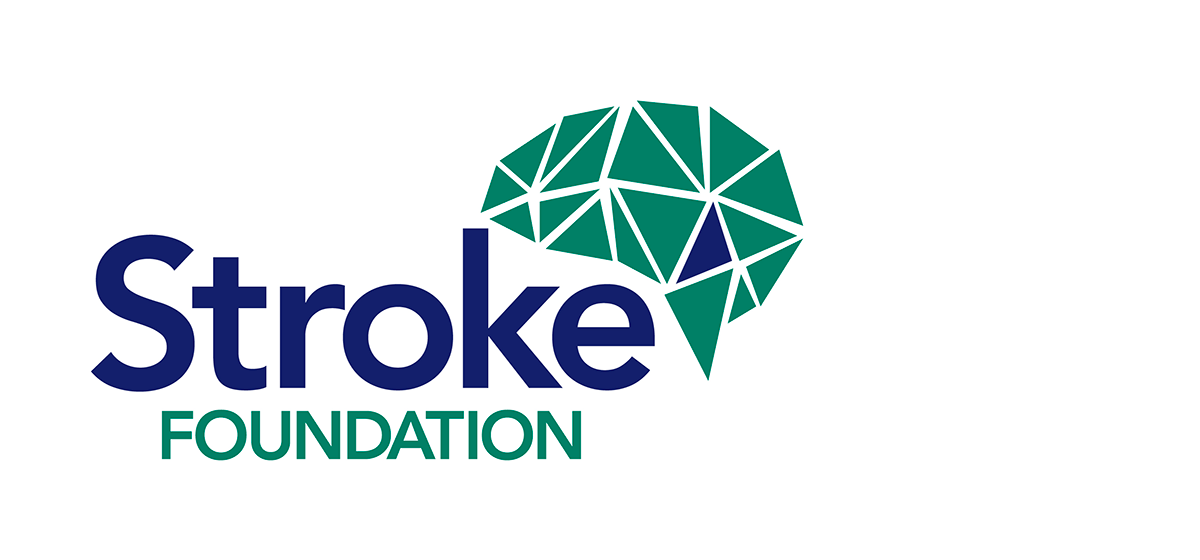- Continue to engage global regulators and customers on safe return to service of the 737 MAX
- Revenue of $20.0 billion reflecting lower 737 deliveries and higher defense and services volume
- GAAP EPS of $2.05 and core EPS (non-GAAP)* of $1.45 per share
- Operating cash flow of ($2.4) billion; paid $1.2 billion of dividends
- Total backlog of $470 billion, including nearly 5,500 commercial airplanes
- Cash and marketable securities of $10.9 billion provide strong liquidity
Table 1. Summary Financial Results | Third Quarter | Nine Months | |||||||||
(Dollars in Millions, except per share data) | 2019 | 2018 | Change | 2019 | 2018 | Change | |||||
Revenues | $19,980 | $25,146 | (21)% | $58,648 | $72,786 | (19)% | |||||
GAAP | |||||||||||
Earnings From Operations | $1,259 | $2,227 | (43)% | $229 | $7,812 | (97)% | |||||
Operating Margin | 6.3% | 8.9% | (2.6) Pts | 0.4% | 10.7% | (10.3) Pts | |||||
Net Earnings | $1,167 | $2,363 | (51)% | $374 | $7,036 | (95)% | |||||
Earnings Per Share | $2.05 | $4.07 | (50)% | $0.66 | $11.95 | (94)% | |||||
Operating Cash Flow | ($2,424) | $4,559 | NM | ($226) | $12,375 | NM | |||||
Non-GAAP* | |||||||||||
Core Operating Earnings/(Loss) | $895 | $1,890 | (53)% | ($864) | $6,793 | NM | |||||
Core Operating Margin | 4.5% | 7.5% | (3.0) Pts | (1.5)% | 9.3% | (10.8) Pts | |||||
Core Earnings/(Loss) Per Share | $1.45 | $3.58 | (59)% | ($1.13) | $10.55 | NM | |||||
*Non-GAAP measure; complete definitions of Boeing’s non-GAAP measures are on page 6, “Non-GAAP Measures Disclosures.” |
The Boeing Company [NYSE: BA] reported third-quarter revenue of $20.0 billion, GAAP earnings per share of $2.05 and core earnings per share (non-GAAP)* of $1.45, reflecting lower 737 deliveries partially offset by higher defense and services volume (Table 1). Boeing recorded operating cash flow of ($2.4) billion and paid $1.2 billion of dividends.
Boeing has developed software and training updates for the 737 MAX and continues to work with the FAA and global civil aviation authorities to complete remaining steps toward certification and readiness for return to service. These regulatory authorities will determine the timing and conditions of return to service in each relevant jurisdiction. For purposes of the third-quarter results, the company has assumed that regulatory approval of the 737 MAX return to service begins in the fourth quarter of 2019 and that it will gradually increase the 737 production rate from 42 per month to 57 per month by late 2020.
“Our top priority remains the safe return to service of the 737 MAX, and we’re making steady progress,” said Boeing President and Chief Executive Officer Dennis Muilenburg. “We’ve also taken action to further sharpen our company’s focus on product and services safety, and we continue to deliver on customer commitments and capture new opportunities with our values of safety, quality and integrity always at the forefront.”
Table 2. Cash Flow | Third Quarter | Nine Months | |||||
(Millions) | 2019 | 2018 | 2019 | 2018 | |||
Operating Cash Flow | ($2,424) | $4,559 | ($226) | $12,375 | |||
Less Additions to Property, Plant & Equipment | ($465) | ($457) | ($1,387) | ($1,227) | |||
Free Cash Flow* | ($2,889) | $4,102 | ($1,613) | $11,148 | |||
*Non-GAAP measure; complete definitions of Boeing’s non-GAAP measures are on page 6, “Non-GAAP Measures Disclosures.” |
Operating cash flow was ($2.4) billion in the quarter, primarily reflecting lower 737 delivery and advance payments as well as timing of receipts and expenditures (Table 2). During the quarter, the company paid $1.2 billion of dividends, reflecting a 20 percent increase in dividends per share compared to the same period of the prior year.
Table 3. Cash, Marketable Securities and Debt Balances | Quarter-End | ||
(Billions) | Q3 19 | Q2 19 | |
Cash | $9.8 | $9.2 | |
Marketable Securities1 | $1.1 | $0.4 | |
Total | $10.9 | $9.6 | |
Debt Balances: | |||
The Boeing Company, net of intercompany loans to BCC | $22.8 | $17.3 | |
Boeing Capital, including intercompany loans | $1.9 | $1.9 | |
Total Consolidated Debt | $24.7 | $19.2 | |
1Marketable securities consists primarily of time deposits due within one year classified as “short-term investments.” |
Cash and investments in marketable securities totaled $10.9 billion, compared to $9.6 billion at the beginning of the quarter (Table 3). Debt was $24.7 billion, up from $19.2 billion at the beginning of the quarter primarily due to the issuance of new debt.
Total company backlog at quarter-end was $470 billion and included net orders of $16 billion.
Segment Results
Commercial Airplanes
Table 4. Commercial Airplanes | Third Quarter | Nine Months | |||||||||
(Dollars in Millions) | 2019 | 2018 | Change | 2019 | 2018 | Change | |||||
Commercial Airplanes Deliveries | 62 | 190 | (67)% | 301 | 568 | (47)% | |||||
Revenues | $8,249 | $14,071 | (41)% | $24,793 | $40,968 | (39)% | |||||
(Loss)/Earnings from Operations | ($40) | $2,033 | NM | ($3,813) | $5,230 | NM | |||||
Operating Margin | (0.5)% | 14.4% | (14.9) Pts | (15.4)% | 12.8% | NM | |||||
Commercial Airplanes third-quarter revenue was $8.2 billion reflecting lower 737 deliveries (Table 4). Third-quarter operating margin decreased to (0.5) percent reflecting lower 737 deliveries partially offset by a higher margin on the 787 program. During the quarter estimated costs to produce 737 aircraft included in the accounting quantity increased by $0.9 billion primarily to reflect current assumptions regarding timing of return to service and the timing of planned production rate increases. There was no significant change to estimated potential concessions and other considerations to customers related to the 737 MAX grounding.
Commercial Airplanes delivered 62 airplanes during the quarter. Given the current global trade environment, the 787 production rate will be reduced to 12 airplanes per month for approximately two years beginning in late 2020. The 777X program is progressing through pre-flight testing and remains on track for first flight in early 2020. The company is now targeting early 2021 for first delivery of the 777X.
Commercial Airplanes booked net orders worth $5 billion during the quarter, including orders for twenty 787 airplanes for Korean Air, eight 787 airplanes for Air New Zealand, and six 777 freighters for China Airlines. Commercial Airplanes backlog included nearly 5,500 airplanes valued at $387 billion.
Defense, Space & Security
Table 5. Defense, Space & Security | Third Quarter | Nine Months | |||||||||
(Dollars in Millions) | 2019 | 2018 | Change | 2019 | 2018 | Change | |||||
Revenues | $7,042 | $6,937 | 2% | $20,265 | $19,518 | 4% | |||||
Earnings/(Loss) from Operations | $755 | ($247) | NM | $2,577 | $886 | 191% | |||||
Operating Margin | 10.7% | (3.6)% | 14.3 Pts | 12.7% | 4.5% | 8.2 Pts | |||||
Defense, Space & Security third-quarter revenue increased to $7.0 billion primarily driven by higher volume on satellites, weapons, and T-7A Red Hawk (formerly T-X Trainer), partially offset by lower volume on F-15 (Table 5). Third-quarter operating margin increased to 10.7 percent primarily due to the absence of third quarter 2018 charges and improved performance.
During the quarter, Defense, Space & Security received contracts for the fifth production lot for 15 KC-46A Tanker aircraft for the U.S. Air Force and nine AH-64E Apache helicopters for the U.S. Army. Significant milestones achieved during the quarter included completion of the first test flight of the MQ-25 unmanned aerial refueler, first flight of the inaugural P-8A Poseidon aircraft for the United Kingdom Royal Air Force, and final assembly of the Space Launch System core stage structure. Defense, Space & Security also performed the 100th test flight of the T-7A Red Hawk.
Backlog at Defense, Space & Security was $62 billion, of which 30 percent represents orders from customers outside the U.S.
Global Services
Table 6. Global Services | Third Quarter | Nine Months | |||||||||
(Dollars in Millions) | 2019 | 2018 | Change | 2019 | 2018 | Change | |||||
Revenues | $4,658 | $4,101 | 14% | $13,820 | $12,148 | 14% | |||||
Earnings from Operations | $673 | $548 | 23% | $2,013 | $1,799 | 12% | |||||
Operating Margin | 14.4% | 13.4% | 1.0 Pts | 14.6% | 14.8% | (0.2) Pts | |||||
Global Services third-quarter revenue increased to $4.7 billion, primarily driven by the acquisition of Boeing Distribution Services, Inc. (formerly KLX) and higher government services volume (Table 6). Third-quarter operating margin increased to 14.4 percent primarily due to improved performance.
During the quarter, Global Services was awarded contracts with the U.S. Air Force for F-15 training to Qatar, A-10 Thunderbolt II re-winging, and KC-46A Tanker Lot 5 services. Global Services also signed an agreement with IndiGo for digital solutions and delivered the first SpiceXpress 737-800 Boeing Converted Freighter following India certification.
Additional Financial Information
Table 7. Additional Financial Information | Third Quarter | Nine Months | |||||
(Dollars in Millions) | 2019 | 2018 | 2019 | 2018 | |||
Revenues | |||||||
Boeing Capital | $66 | $77 | $207 | $214 | |||
Unallocated items, eliminations and other | ($35) | ($40) | ($437) | ($62) | |||
Earnings from Operations | |||||||
Boeing Capital | $29 | $27 | $86 | $71 | |||
FAS/CAS service cost adjustment | $364 | $337 | $1,093 | $1,019 | |||
Other unallocated items and eliminations | ($522) | ($471) | ($1,727) | ($1,193) | |||
Other income, net | $121 | $12 | $334 | $63 | |||
Interest and debt expense | ($203) | ($106) | ($480) | ($317) | |||
Effective tax rate | 0.8% | (10.8)% | (350.6)% | 6.9% | |||
At quarter-end, Boeing Capital’s net portfolio balance was $2.2 billion. The change in earnings from other unallocated items and eliminations is primarily due to increased enterprise research and development investment. Interest and debt expense increased due to higher debt balances. The effective tax rate for the third quarter increased from the same period in the prior year primarily due to a $412 million benefit related to a 2013-2014 tax settlement that was recorded in the third quarter of 2018, partially offset by larger 2019 tax rate benefits resulting from lower pre-tax earnings.
Non-GAAP Measures Disclosures
We supplement the reporting of our financial information determined under Generally Accepted Accounting Principles in the United States of America (GAAP) with certain non-GAAP financial information. The non-GAAP financial information presented excludes certain significant items that may not be indicative of, or are unrelated to, results from our ongoing business operations. We believe that these non-GAAP measures provide investors with additional insight into the company’s ongoing business performance. These non-GAAP measures should not be considered in isolation or as a substitute for the related GAAP measures, and other companies may define such measures differently. We encourage investors to review our financial statements and publicly-filed reports in their entirety and not to rely on any single financial measure. The following definitions are provided:
Core Operating Earnings/(Loss), Core Operating Margin and Core Earnings/(Loss) Per Share
Core operating earnings/(loss) is defined as GAAP earnings from operations excluding the FAS/CAS service cost adjustment. The FAS/CAS service cost adjustment represents the difference between the FAS pension and postretirement service costs calculated under GAAP and costs allocated to the business segments. Core operating margin is defined as core operating earnings/(loss) expressed as a percentage of revenue. Core earnings/(loss) per share is defined as GAAP diluted earnings per share excluding the net earnings per share impact of the FAS/CAS service cost adjustment and Non-operating pension and postretirement expenses. Non-operating pension and postretirement expenses represent the components of net periodic benefit costs other than service cost. Pension costs, comprising service and prior service costs computed in accordance with GAAP are allocated to Commercial Airplanes and BGS businesses supporting commercial customers. Pension costs allocated to BDS and BGS businesses supporting government customers are computed in accordance with U.S. Government Cost Accounting Standards (CAS), which employ different actuarial assumptions and accounting conventions than GAAP. CAS costs are allocable to government contracts. Other postretirement benefit costs are allocated to all business segments based on CAS, which is generally based on benefits paid. Management uses core operating earnings/(loss), core operating margin and core earnings/(loss) per share for purposes of evaluating and forecasting underlying business performance. Management believes these core earnings/(loss) measures provide investors additional insights into operational performance as they exclude non-service pension and post-retirement costs, which primarily represent costs driven by market factors and costs not allocable to government contracts. A reconciliation between the GAAP and non-GAAP measures is provided on page 13-14.
Free Cash Flow
Free cash flow is defined as GAAP operating cash flow without capital expenditures for property, plant and equipment additions. Management believes free cash flow provides investors with an important perspective on the cash available for shareholders, debt repayment, and acquisitions after making the capital investments required to support ongoing business operations and long term value creation. Free cash flow does not represent the residual cash flow available for discretionary expenditures as it excludes certain mandatory expenditures such as repayment of maturing debt. Management uses free cash flow as a measure to assess both business performance and overall liquidity. Table 2 provides a reconciliation of free cash flow to GAAP operating cash flow.
Caution Concerning Forward-Looking Statements
This press release contains “forward-looking statements” within the meaning of the Private Securities Litigation Reform Act of 1995. Words such as “may,” “should,” “expects,” “intends,” “projects,” “plans,” “believes,” “estimates,” “targets,” “anticipates,” and similar expressions generally identify these forward-looking statements. Examples of forward-looking statements include statements relating to our future financial condition and operating results, as well as any other statement that does not directly relate to any historical or current fact. Forward-looking statements are based on expectations and assumptions that we believe to be reasonable when made, but that may not prove to be accurate. These statements are not guarantees and are subject to risks, uncertainties, and changes in circumstances that are difficult to predict. Many factors could cause actual results to differ materially and adversely from these forward-looking statements. Among these factors are risks related to: (1) the timing and conditions surrounding the return to service of the 737 MAX fleet; (2) general conditions in the economy and our industry, including those due to regulatory changes; (3) our reliance on our commercial airline customers; (4) the overall health of our aircraft production system, planned commercial aircraft production rate changes, our commercial development and derivative aircraft programs, and our aircraft being subject to stringent performance and reliability standards; (5) changing budget and appropriation levels and acquisition priorities of the U.S. government; (6) our dependence on U.S. government contracts; (7) our reliance on fixed-price contracts; (8) our reliance on cost-type contracts; (9) uncertainties concerning contracts that include in-orbit incentive payments; (10) our dependence on our subcontractors and suppliers, as well as the availability of raw materials; (11) changes in accounting estimates; (12) changes in the competitive landscape in our markets; (13) our non-U.S. operations, including sales to non-U.S. customers; (14) threats to the security of our or our customers’ information; (15) potential adverse developments in new or pending litigation and/or government investigations; (16) customer and aircraft concentration in our customer financing portfolio; (17) changes in our ability to obtain debt on commercially reasonable terms and at competitive rates; (18) realizing the anticipated benefits of mergers, acquisitions, joint ventures/strategic alliances or divestitures; (19) the adequacy of our insurance coverage to cover significant risk exposures; (20) potential business disruptions, including those related to physical security threats, information technology or cyber-attacks, epidemics, sanctions or natural disasters; (21) work stoppages or other labor disruptions; (22) substantial pension and other postretirement benefit obligations; and (23) potential environmental liabilities.
Additional information concerning these and other factors can be found in our filings with the Securities and Exchange Commission, including our most recent Annual Report on Form 10-K, Quarterly Reports on Form 10-Q and Current Reports on Form 8-K. Any forward-looking statement speaks only as of the date on which it is made, and we assume no obligation to update or revise any forward-looking statement, whether as a result of new information, future events, or otherwise, except as required by law.






